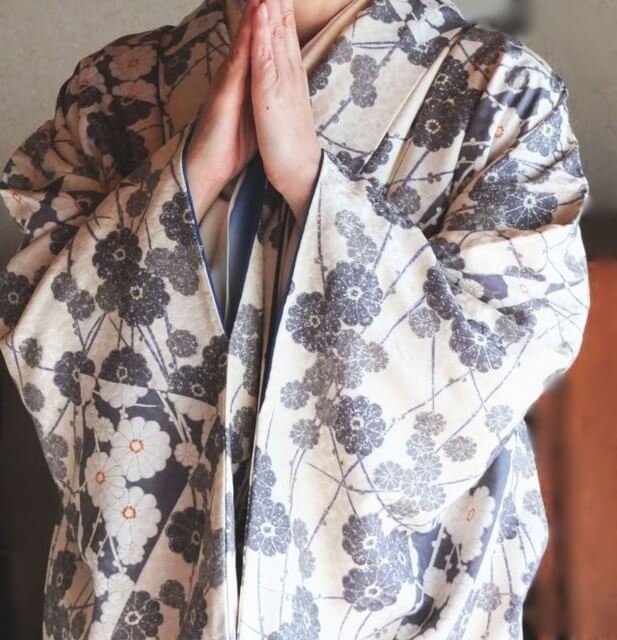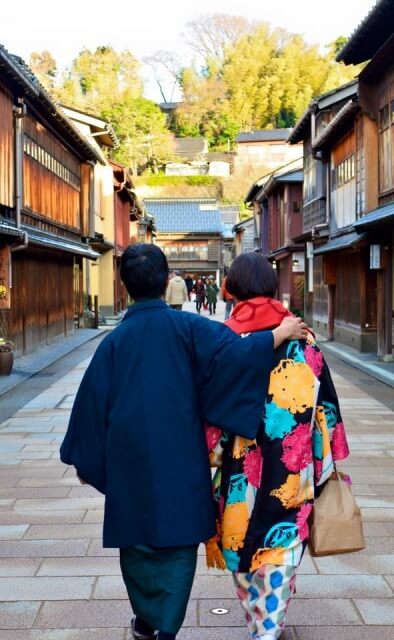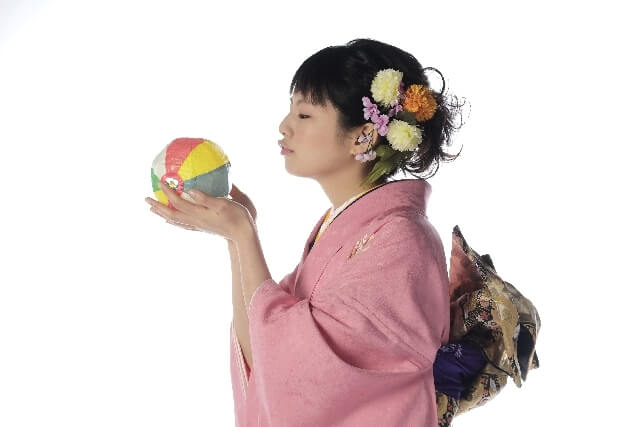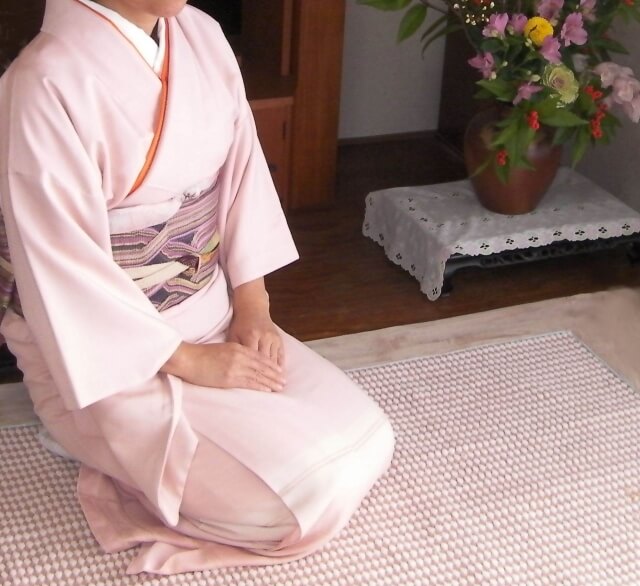Many people are eager to try on a Japanese kimono when they come to Japan. Dressing up and taking photos at exciting locations is a lot of fun, but are you familiar with kimono etiquette? Do you know how to act while wearing a kimono? If not, read this short guide on what to do and what not to do while wearing a kimono. The basic rules of kimono etiquette include:
- Good posture
- Sit formally
- Watching your sleeves
- Walking slowly
- Eating carefully
Before even getting into the etiquette though, you may want to learn the basics about Japanese traditional wear. You can check out our article ”Know Your Kimono: 9 Different Kimono Types” about the many kimono types .
Kimono Etiquette 1: Good posture
When standing, sitting or kneeling you need to keep good posture. But don’t worry, the obi will help you keep your back straight. Remember to make slow movements as to not displace any of the folds in the kimono. Depending on the type of knot in your obi, you also have to be careful with leaning back. The general rule is, don’t lean back! You will crush the knot you put so much effort into.
Kimono Etiquette 2: Sit formally
Wearing a kimono usually means you are at a formal event. Especially when attending a tea ceremony and other traditional affairs inside a Japanese home or building, you will likely be sitting on tatami floors or a small pillow called a zabuton. In that case, you should sit in the seiza position while wearing a kimono. Seiza is the most formal way of sitting in Japan, so it is important for kimono etiquette. To sit seiza-style, put sit on your knees with your feet directly behind you. Of course, your kimono should be neatly folded under your knees when sitting. Make sure you move slowly and gently keep the kimono in place as you lower down onto the floor. Men wearing kimono may sit with their legs crossed, but women should not, as it would expose the legs. When sitting in a chair, make sure that your kimono is tucked under your bottom nicely, so that it is not wrinkled.
Kimono Etiquette 3: Watch your sleeves
Kimono sleeves should reach just above the wrist, but never too high. To keep your sleeve from sliding up, don’t raise your arms or make wild movements. Good kimono etiquette means no holding onto the handles on the train or bus. Also, you should not waive your arms while wearing a kimono. Phonecalls with your cellphone are also a not good kimono etiquette unless you hold your raised arm’s sleeve with your other hand to keep it from sliding down. But watch that the other arm’s sleeve doesn’t move too much! Be sure to take extra care of these things when wearing a long-sleeve kimono called Furisode.
As you might have noticed, all of this requires some practice.

Kimono Etiquette 4: Walk slowly
You will notice that when wearing a kimono, it is difficult to make big steps. This is good because you need to avoid doing this anyway. Good kimono etiquette requires you to walk slowly. If you would walk in big strides, your kimono would fly open and reveal your underkimono or even your bare legs. This may seem weird in a modern world where shorts skirts and shorts are an everyday thing. However, in Old Japan showing your legs and wrists too much was very scandalous.

Kimono Etiquette 5: Be careful while eating
Kimono are difficult to wash but easy to get dirty. Be careful while eating and place a napkin over your obi or put it on your collar like in a restaurant. Generally, good eating habits are also good things to remember for kimono etiquette. Remember to watch those sleeves!
Be yourself!
Although a certain degree of standard etiquette is required when wearing a kimono, it is also important to be yourself. Nowadays there are many creative kimono with modern patterns. Also, the hairstyles with kimono aren’t that stiff anymore. Basically, you can do what you want as long as you know the basics of kimono etiquette.

We hope you learned something new about kimonos, and that we inspired you to try one on yourself. The world of kimonos is wonderful and waiting for your creativity.
WATTENTION NINJA WRITER PROFILE

From popular culture to traditional culture, I’ve immersed myself in both. I love writing about tradition, history and sharing fun discoveries. If I’m not outside watching a festival parade I’m leisurely reading manga in kimono.
 0
0























